HD-DVD Playback - On the Xbox 360 & on NVIDIA GPUs
by Derek Wilson & Manveer Wasson on December 15, 2006 9:21 AM EST- Posted in
- GPUs
Xbox 360 HD-DVD Drive
The first thing to note about the XBox 360 HD-DVD drive is the price. Microsoft's $200 solution is much more affordable than our $900 Pioneer Blu-ray drive, thanks to the fact that it's only a reader, not a recorder. Top it off with the fact that this is an external device that is easily portable and requires no drivers to be installed to use, and we have quite a compelling product.
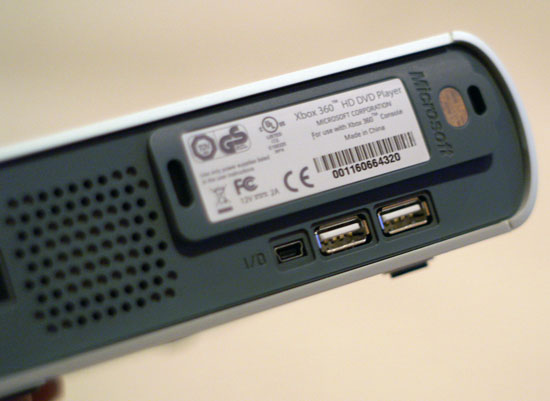
The HD-DVD drive eats up one USB port on the 360 but gives you two more in return
The USB 2.0 connection provides plenty of bandwidth for movies, as no decoder is expected to handle 300+ Mbps video on any HD codec.
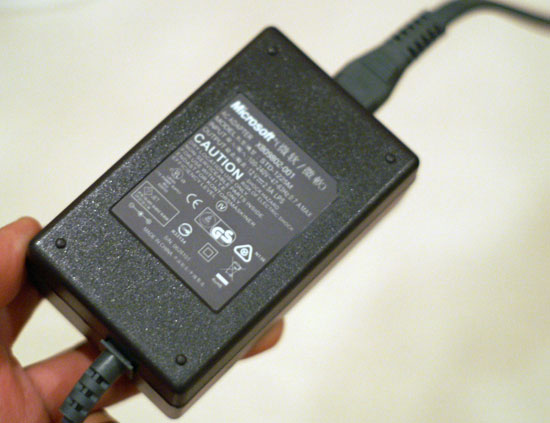

In the box, in addition to the drive itself (which looks like a mini Xbox 360) we get a remote, USB cable, power brick, and an installation disc. In order to use the drive with the Xbox 360, the installation disc must be placed in the 360's DVD drive (not in the HD-DVD drive).


After the software has been installed, the system will need an update from XBox live to bring Microsoft's HD-DVD player up to the latest version (the update won't be installed until the HD-DVD drive installation disc has been installed). After that, we can start using our HD-DVD drive with the XBox 360.

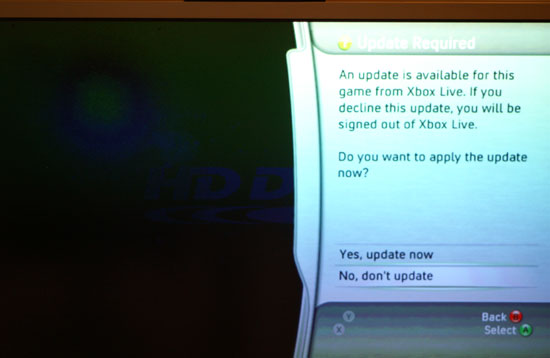
Playing an HD-DVD is done the same way we would select a game to play. When both a game and an HD-DVD are in the drive, we can select between the two:
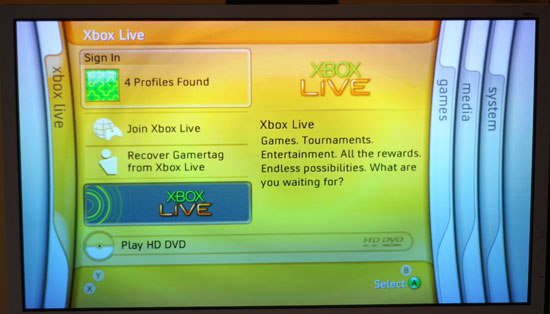
The HD-DVD drive can't be used for games on the XBox 360, and is only really useful as a movie player; this is one of the downsides of selling the drive as an add-on.
From our navigation of the menus, watching movies, and playing with fast forward and rewind, we can easily say that the Microsoft HD-DVD player and the Xbox 360 do a good job of handling the content we've seen thus far - at least as well as our PC platforms. Since you're not really expected (or able in many cases) to multitask on your 360, CPU utilization doesn't really matter so long as the player doesn't drop any frames.
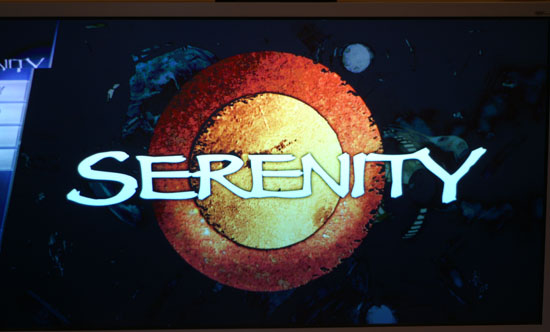
We didn't encounter any dropped frames in our HD-DVD tests on the 360 and things like fast forwarding/menu navigation felt the same as it did on our PC testbeds. The time it takes to play a movie was also comparable to our PC testbeds (light years faster than Toshiba's first-generation HD-DVD set-top box). Note that the Xbox 360 also uses GPU acceleration to playback HD-DVDs, in this case the GPU acceleration is handled by the ATI GPU in the 360 itself.
As an HD-DVD player, the Xbox 360 does just fine, but what sort of a PC do you need to get a similar experience? That's what we'll find out next.










51 Comments
View All Comments
Eug - Friday, December 15, 2006 - link
No you can't. The cheapest HD DVD player in existence is $499 retail. The 1st generation Toshiba HD-A1 is now less than $400, and the better 2nd generation Toshiba HD-A2 is $399 street in a few places.
JarredWalton - Friday, December 15, 2006 - link
Sorry - my comment there and I'll correct it, as the price I looked at was apparently bogus (was a single seller that might be a scam, not a real price).XMan - Friday, December 15, 2006 - link
Some people on AVS Forums were having problems with Power DVD down-rezzing their movies to 540P with this drive and the software . . . did you have any issues with such during testing, or was it detected properly as a 1080P source?Tujan - Friday, December 15, 2006 - link
That Microsoft HD-DVD player is certainly a solid-state idea for playback of HD-DVDs.The USB 2 bus though,it has a bandwidth of 480 mbytes per second.
Wich is faster than,a Sata II,that rarely gets its rated 300 mbytes second.
Thanks to tabbed browsing:
The H.264 playback from the USB attached device of the HD-DVD(480mybtespersecond)was about even with the H.264 playback of the X-men on the Sata II device.(300mybetspersecond)
...This does approach the type of impact we saw on Blu-ray, but bitrates were more consistent on this HD-DVD title. We didn't see any real spikes above the average bitrate, and CPU utilizat....
Im betwixt of just what the ideal of emphasis is here.True just show the analysis of the cpu usage among several different video cards. Question being ''can the pc put out the necesary performance for the HD-DVD,or BR disks".
H.264 is used in one instance,and VC-1 in the other on the media(HD,BR).And MPEG2,will be on BR,as much as the better of the two will be more modern H.264.
I dont see that the size of the disk has anything to do with the bandwith.They are each what is it 4.5 inch disks across.
But I do see that in reference to frames they may be obsolete in the future.If it is true that such 'programming'in 'compression'conducts i/o to better terminology.
I guess it is to have 'something'to show for what is the 'new disk readers.Nobody has these Nvidia GPUs,so this is just technical bliss to me.
Any 'bus can do any of the formats.Some better than others.So HD-DVD,and BR-DVD H264 disks are not created alike.
I gues codecs however are also not created alike.
AND WE USED AN HDTV TO DO ALL OUR TESTS.Wow-lollipop.(with WHAT CONNECTORS)
All in good spirit.
Happy Holidays.
DerekWilson - Sunday, December 17, 2006 - link
our Blu-ray player is PATATujan - Sunday, December 17, 2006 - link
Yes I've seen the applicability of 'device'where MPEG4 was almost completely Apple.H.264 doesn't necesarily mean *HDCP. Above and beyond the topic of your review - the necesity of playback for a content authored disk.
When authoring for HD-DVD,or BR ,hopefully there will be some players in that space for the computer. By players I mean more than a single playback 'device in the software creation area. Of course everybody knows .wmv in WMP. and .mov is Apples player. And before sourjorning on creating content on the computer,one must consider 'format=playback device.
But the codecs are a different animal altogether. The one area in wich 'device isn't necesarily something of noticable distinction from what we see at the computer in 'file association.
HDCP,and such isn't necesarily a codec.But I do not see that for example MPEG4 being something as a readily available choice for 'device as far as the computer goes.
Wouldn't be ahead of myself to consider that for the platform on the computer along with the cpu,gpu,op-system the programs available on a market wide relationship to the HD,BR drives must be available.In the area of consumer authoring.
So MPEG4,MPEG2,and H.264 are 'formats.Each requiring a 'codec ? Well I'll just retire my topic for now.
Thanks for replies.
Frumious1 - Monday, December 18, 2006 - link
Okay man, I have to just say this. Lay off the fucking apostrophe key! Whew! Glad I could get that off my chest.I realize you are not a native English speaker, but you keep putting in random symbols for no apparent reason. If you want to put something in quotes, like it might not actually be what the word indicates, that's one thing, but you don't do that. Take this:
"Yes I've seen the applicability of 'device' where MPEG4 was almost completely Apple."
What the hell is that even supposed to mean? That you've seen MPEG4 used by Apple as a coded? Great. So have we, and that doesn't change anything about the standard. Just like you get AVI files that are really MPEG4 video, you can have a MOV file from Apple that uses H.264.
Even worse is the last sentence:
"So MPEG4,MPEG2,and H.264 are 'formats.Each requiring a 'codec ? Well I'll just retire my topic for now." The apostrophes add nothing to the meaning and in fact detract from it. The simple answer is that yes, MPEG2 and MPEG4 (of which H.264 is a part) are formats that require specific support via a codec. Xvid and DivX are also MPEG4-based codecs.
I'm not at all sure what the specific differences are between the various MPEG4 flavors, but I can say that I've seen very high quality DivX HD encodes (720p) that don't have any HDPC bullshit. That's why I love the Internet: I can just forget about all the junk that Hollywood is trying to force on us and download what I want... for free! Oh yes, I'd love to download episodes of Lost at $2 each and get a POS low resolution version - that's so much better than a 400MB widescreen HDTV rip, don't you think? Even better would be 700MB 720p rips (DivX HD), but it seems the TV video ripping scen isn't that clever yet. Hooray for computers, though, because eventually the people will catch on.
Tujan - Monday, December 18, 2006 - link
I use apostrophes for emphasis. Or for a breather . I woulduse italics. But if italics is the only tool for emphasis,and I am not quoting something already stated use of the ' is to emphasize. Something you would have to take a breather to.Yeah I retired the topic. Since I have been looking into the playback of given file types wich require certain 'players' - most of wich from a certain, and limited propriety to do so.
Most of the recent digital cameras utilize a given 'format. Even though a person buying a camera may be aware of this . They may not be aware that there is only perhaps a single propriety wich can 'playback' the format. So here in puchasing a camera,some forethought is this computer related software dilema.
I have not seen the chart . But there is certainly only several specific software programs available for the computer at the present time. When there is such a highly publisized (think specific) screen dimension in wich devices can in fact create. Yet will not be able to actually participate to because of the limited availability of the software conductive to the specification. For now I might say 'format,but then-and when , it is usually a codec.
Since we here are discussing HD-DVD,and BR. For me it will be the involvement of the designation space available for storage . AND playback. For MPEG2 there is very little consumer available software to create and utilize it. MPEG4 is completely,if not impossible to re-edit. And the playback is still limited. Yet for both a storage medium is present.
So then you not only have format = playback device desired . But you have 'filetype of x certain codec. Wich the proprieties of them are not making available. If only in a limited copacity of 'enterprise. Somebody above mentioned the studios doing their thing.
If you've got the chart,I'd like to see it. Program Name,Proprietor Name,Format type,Codec Required for playback,and storage medium supported. You'll be able to voice no more than 6 or seven available software programs for editing. Naming the codecs you will have perhaps 2 or 3,or none - in the case of BR.
With .mov if its MPEG4,or a derivative there is still the ideal of what your device creates within its storage medium. Making that decision before you know it is very,very limited as a communication medium. Or for portable storage.
I understand the realization of the discussion in the new 'formats,as discussed for H.264. They are always considered as formats. So format=playback device, .. playback device = codec/propriety. Its certanly relevant.
Of course the ubiquity of Divx is self explanatory.The other formats are exactly as self explanatory - in that you need to look out for the equipment that is needed to use them. Sometimes your told what you need. As in the case of the computer whats available is extremely limited. While the proprietaries continue to monopolize in their own fashion - rather than a standard wich one could consider ubiquitous.
If I'm a starter,whats granny looking up to now.?
JarredWalton - Friday, December 15, 2006 - link
I can't say I actually understand your point in most of that post, but let me clarify a few things at least.USB 2.0 is 480 megabits per second (not megabytes!). SATA-2 is technically 3.0 gigabits per second with 8/10 encoding, resulting in real bandwidth of 300 megabytes per second. So, SATA-2 is at least four times faster than USB 2.0, and realistically USB 2.0 is not as reliable in terms of connectivity and bandwidth so you typically max out at closer to 300 megabits for USB 2.0. Given that the maximum throughput we've seen on a Blu-ray disc was only 41 megabits (and average was a much lower 18 mbps), obviously even 300 mbps is more than sufficient.
In terms of CPU usage, H.264 uses more CPU power for higher bitrates, not less. That means a disc with a 10 mbps average bitrate will use less CPU power to display than something that has a 20 mbps bitrate. It's also why looking at downloaded H.264 QuickTime movies that are only 480p resolution doesn't correlate well with viewing 1080p BRD/HDDVD titles.
If you want to watch HDDVD, and you don't have an Xbox 360, you can just go out and get a standalone player for around $125 (no idea on quality, but HDMI is included). BRD players are quite a bit more expensive, to the point where if you can actually find a 20BG PS3 for MSRP ($500) you might as well go that route and get the console for "free". Except you can't find such PS3 prices right now and probably won't be able to for another 3 months. Our best advice is that if you're not dying to get BRD/HDDVD support as soon as possible, just continue to wait and we'll continue to provide analysis on the market and which hardware is best suited for this sort of content.
JarredWalton - Friday, December 15, 2006 - link
Correction: HD-DVD players start at around $350 it appears, so getting the Xbox 360 drive and using it with a PC would be far cheaper. Stupid froogle searches and price hacks....